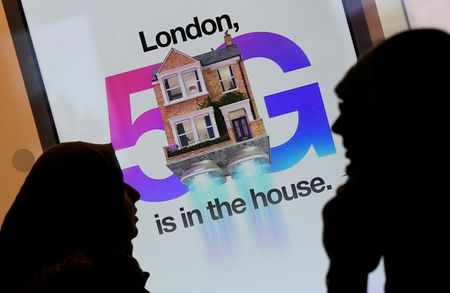Technology infrastructure investment will prevent the left-behind areas of the future

THIS year is set to be a pivotal moment for the future of 5G in Britain. Over the last few years, both the government and Ofcom have made clear their intent to get broadband booming in Britain by incentivising major commercial investment. It has largely worked.
We’ve seen the accelerated availability of gigabit broadband speeds and more fibre built than ever before – with more to come. The problem is this only addresses one part of Britain’s connectivity conundrum. For all the hype of 5G, we’re really just at the beginning of what this technology can deliver.
I have no doubt that 5G will become widely available in the coming years, but that doesn’t mean networks will support the full suite of services and speeds that this connectivity is capable of. Simply having a 5G logo on your phone isn’t the end game here. Focusing purely on coverage overlooks the different flavours of 5G and the investment required to make them possible. 5G can do much more than just letting you catch up on TV while waiting for a bus; it can enable new education formats to autonomous vehicles, remote healthcare and smarter, cleaner cities and manufacturing operations.
Unfortunately, some consumers and businesses risk not being able to take advantage of this full 5G potential for at least another decade because of a lack of 5G connectivity in their areas; a reality at odds with the government’s plans to ensure equality of opportunity across the country.
With the government kicking off a major mobile review and Ofcom set to undertake similar work this year, we’re now at a crucial time with a real opportunity to get things right for the long haul.
We need a pro-investment strategy and outlook. If Britain is going to realise its ambition of having both gigabit broadband and 5G across the country, there needs to be greater alignment in policy sentiment and an environment that encourages the long-term capital-intensive investment needed for the economics of full 5G deployment to stack up. Without that, there’s a big risk that a disconnect emerges between what the country needs and the investment case to make it a reality.
Any wider partnerships should be considered through the lens of needing to invest in the roll out of 5G and other future technologies.
There needs to be a clear, rational and long-term strategy on spectrum – the airwaves used to deliver mobile connectivity like 5G. This includes the release of more spectrum, particularly in the sweet spot known as the mid-band, with a clear timetable set out for doing so. As the 2G and 3G networks start to be switched off over the next decade, there is an urgent need to prepare public services and the wider market. This will mean capital can be focussed on 5G rather than maintenance of outdated technologies. The continued functioning of smart meters is a prime example.
If you want 5G you need physical mobile infrastructure to deliver it. The government needs to follow through on its plans and proposals to update planning regulations to ensure red tape and rents don’t hold back deployment. As the CEO of a company owned by two multinational shareholders, I am regularly banging the drum for even more UK network investment. But I can’t make this case alone.
We, as an industry and a country, should be ambitious about the UK’s future digital infrastructure. Connectivity, above and below ground, will play a major role in propelling the UK forward for decades to come.